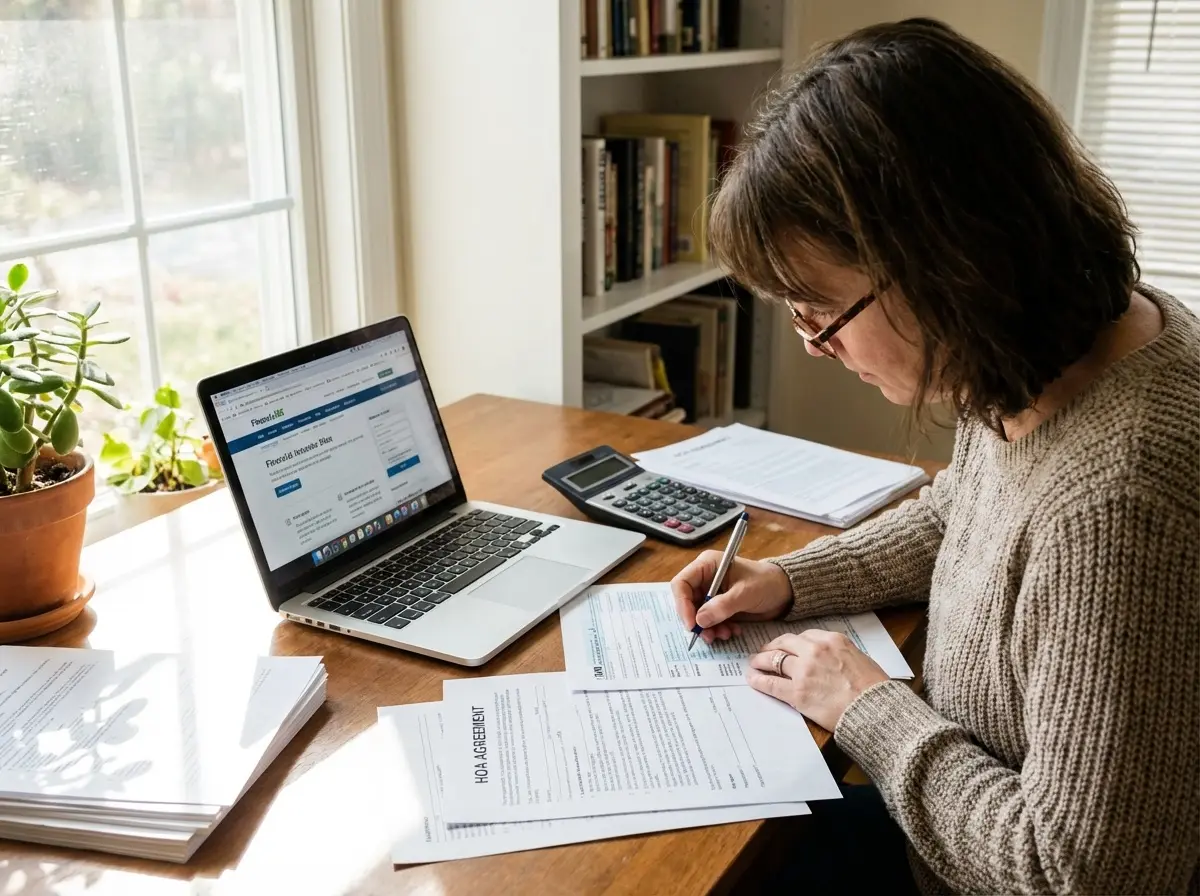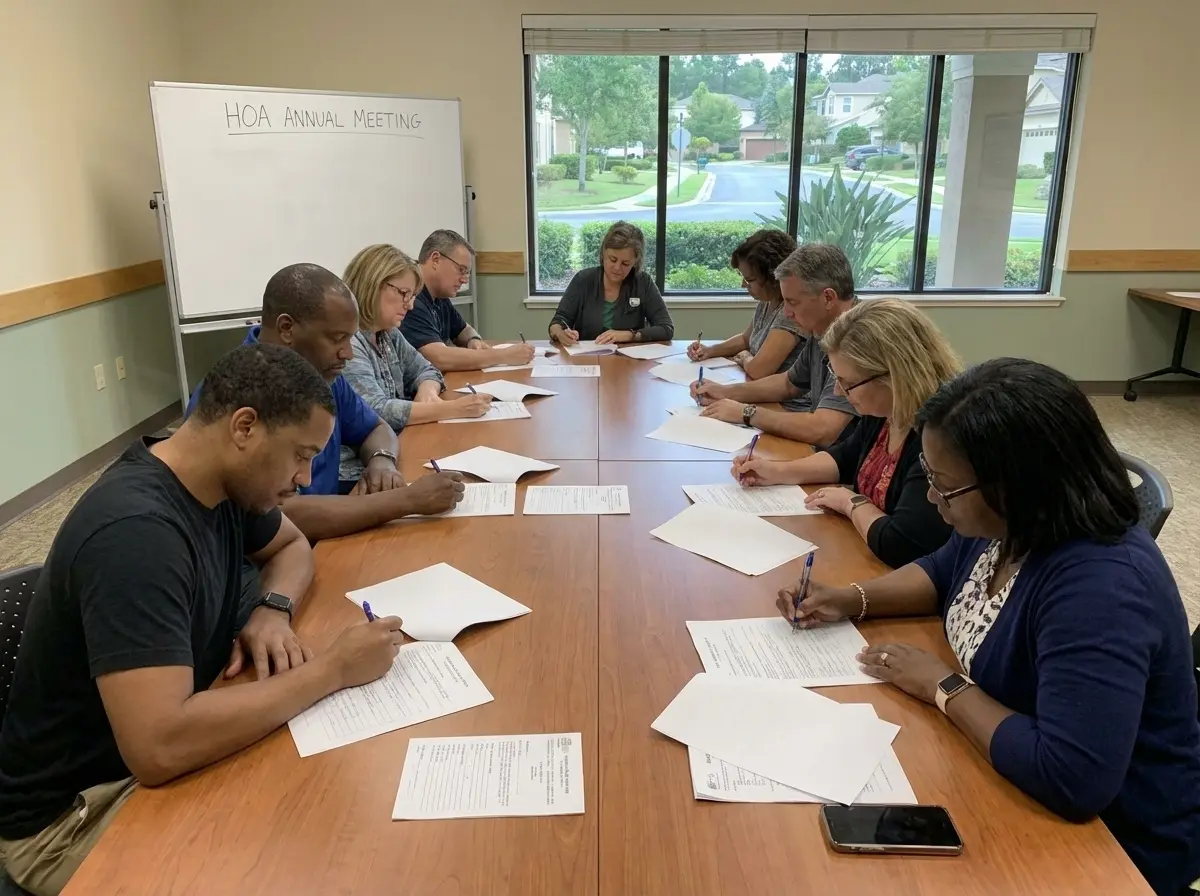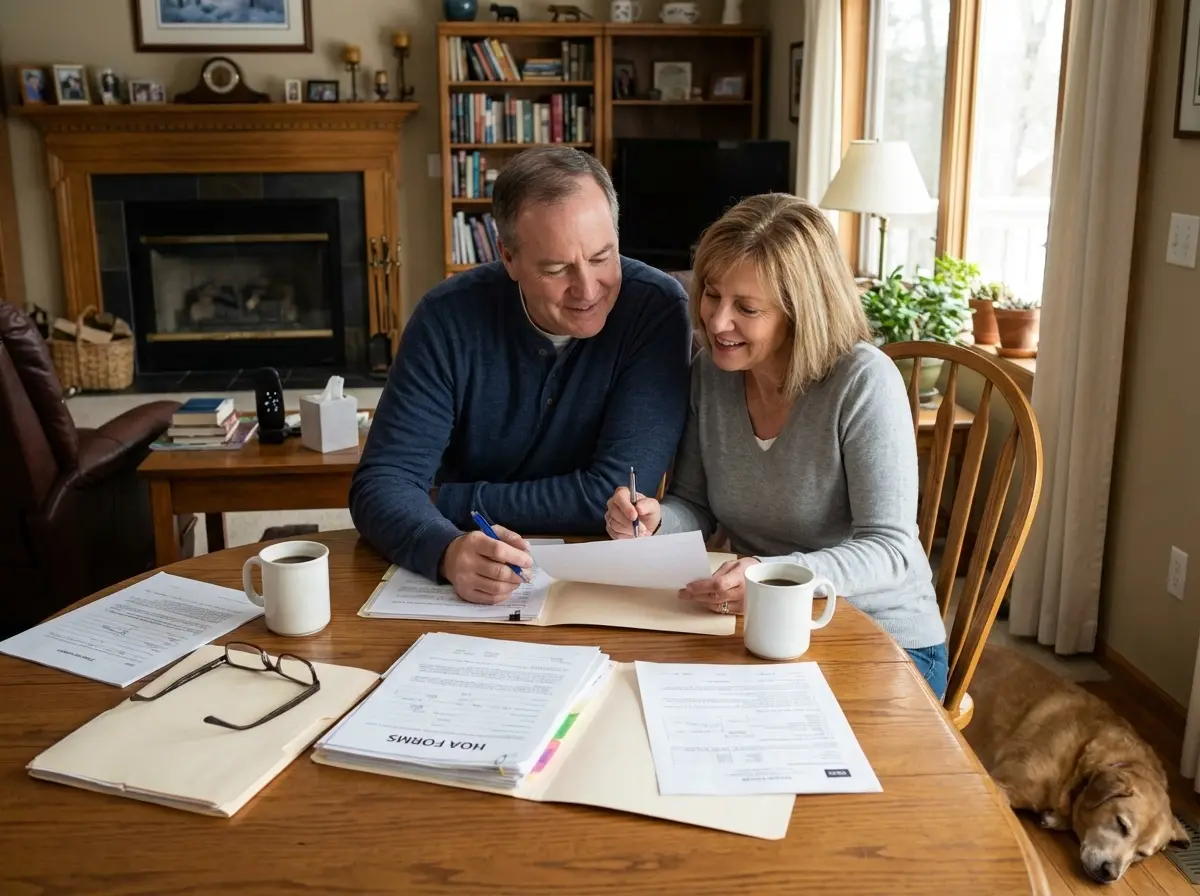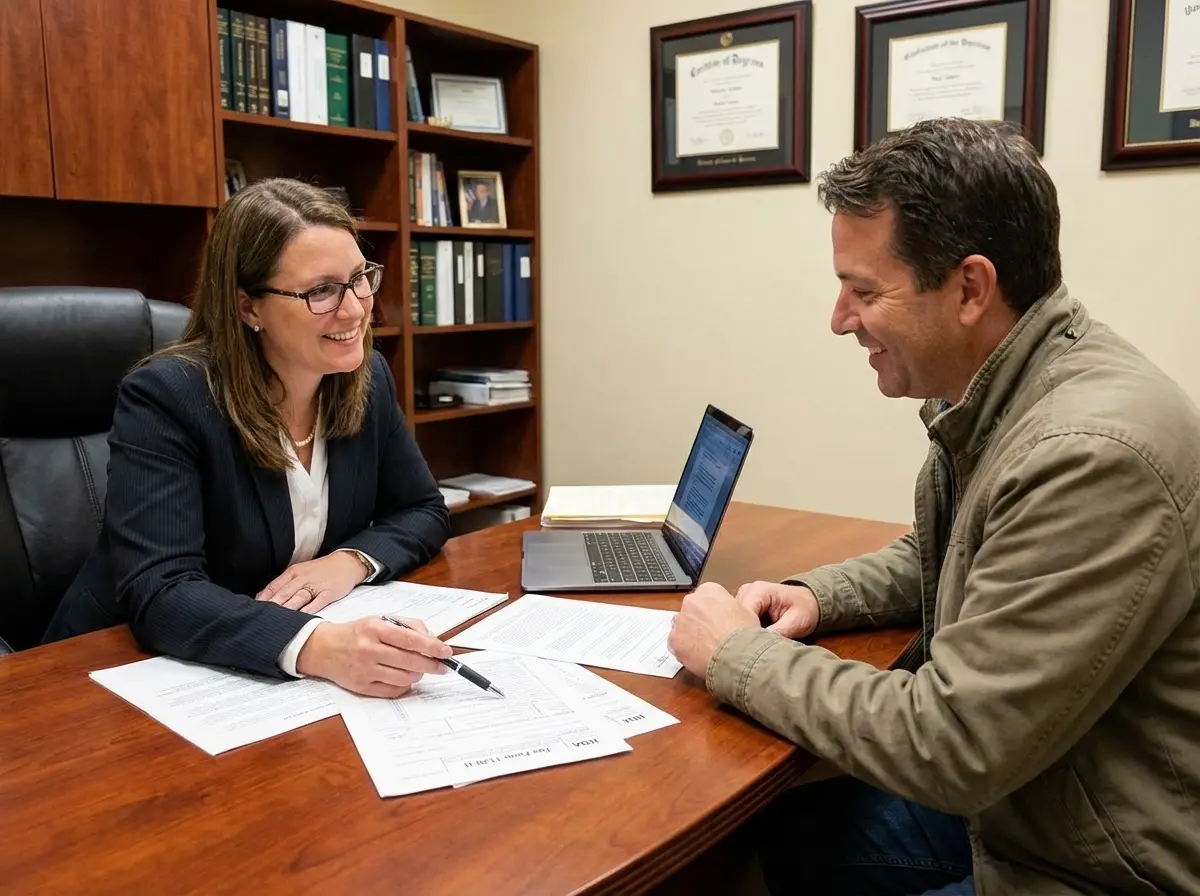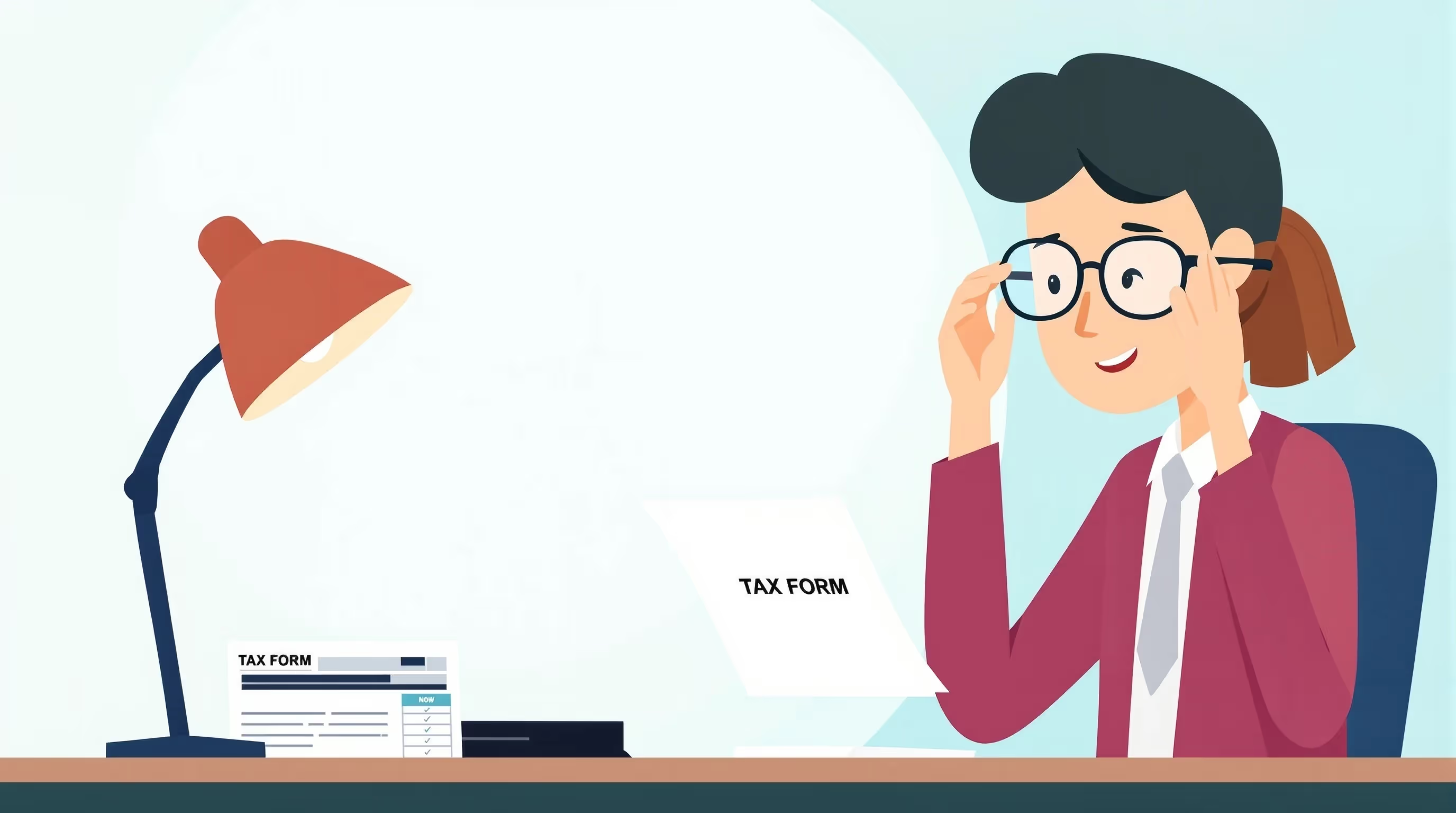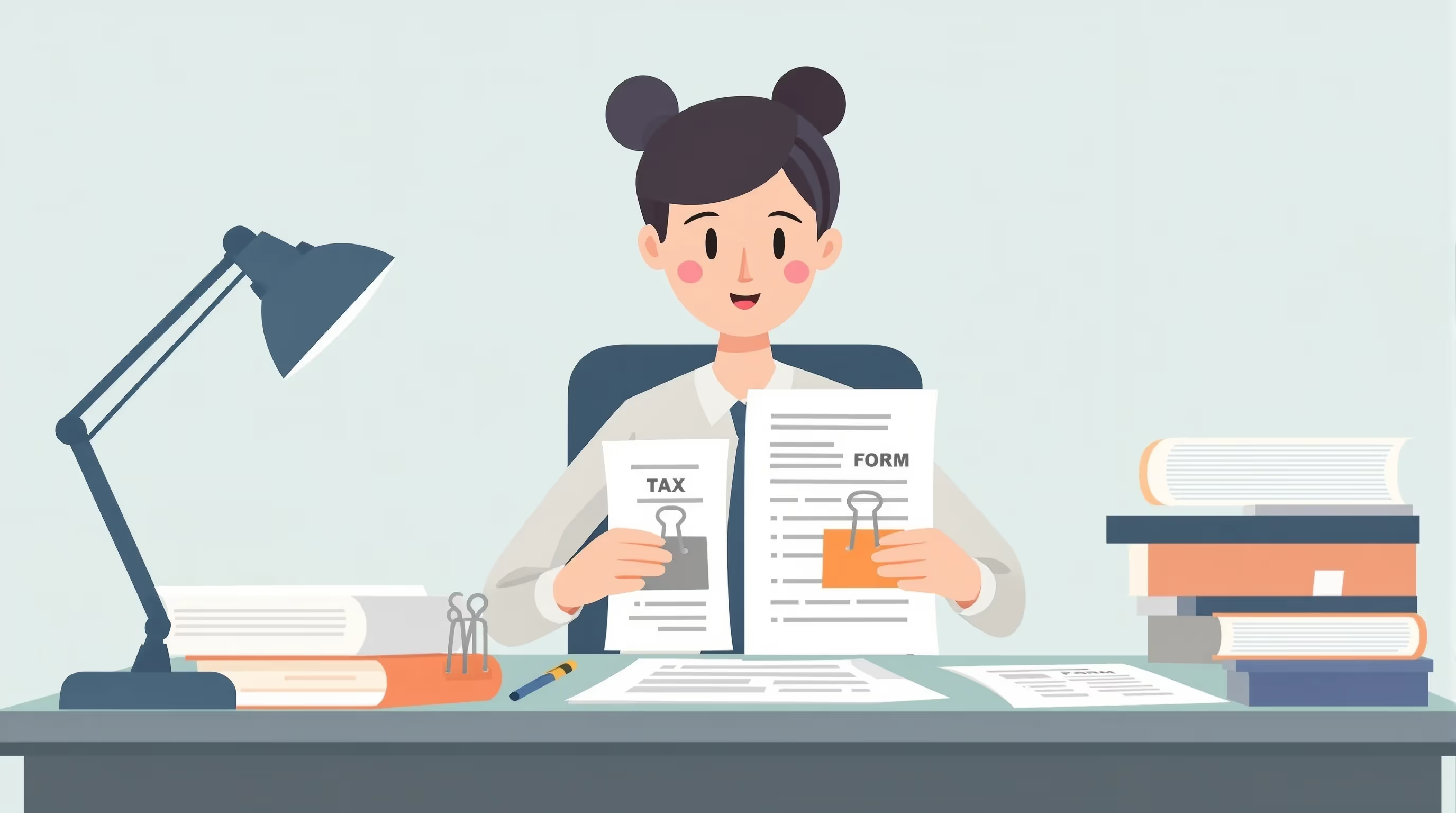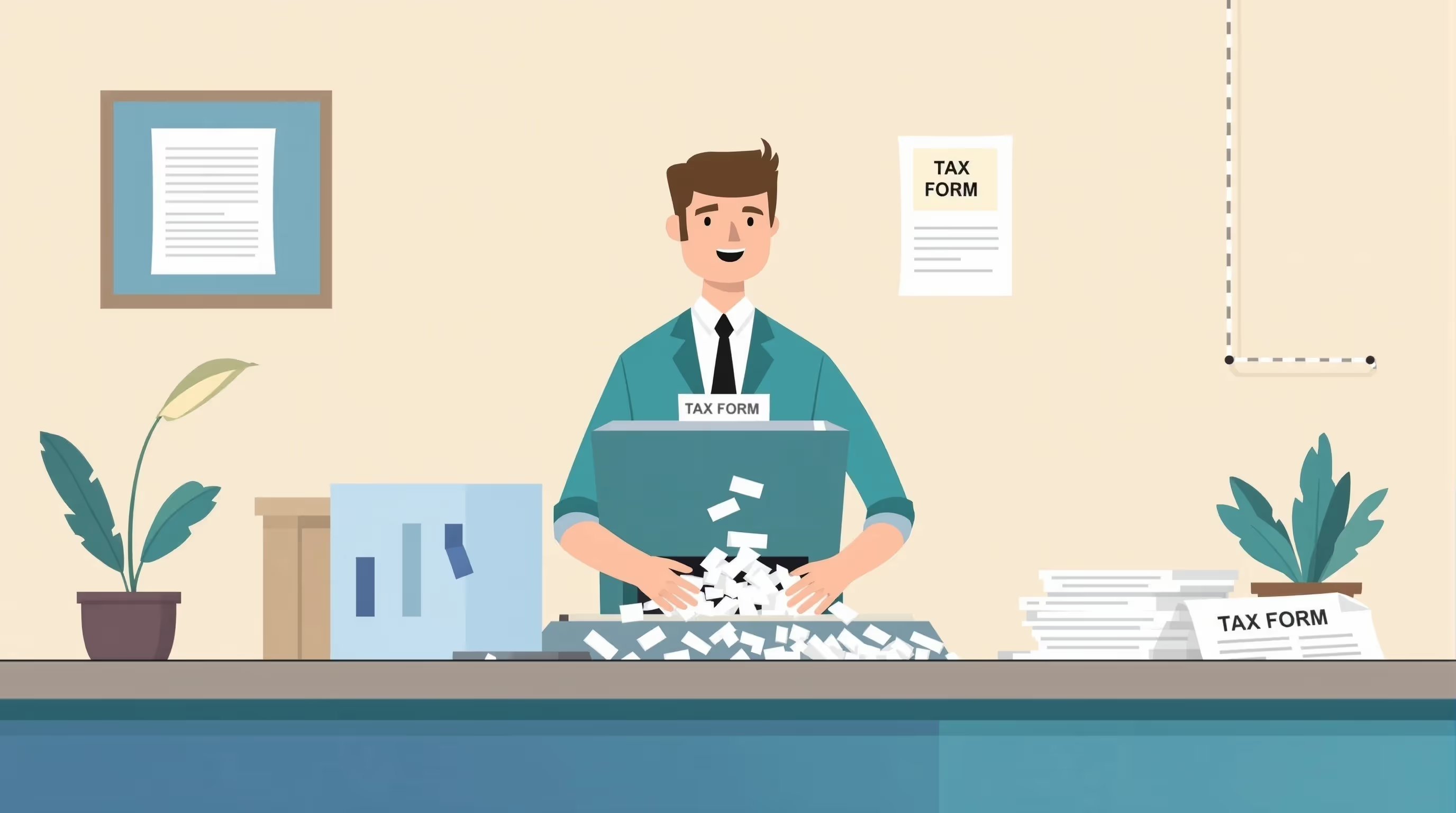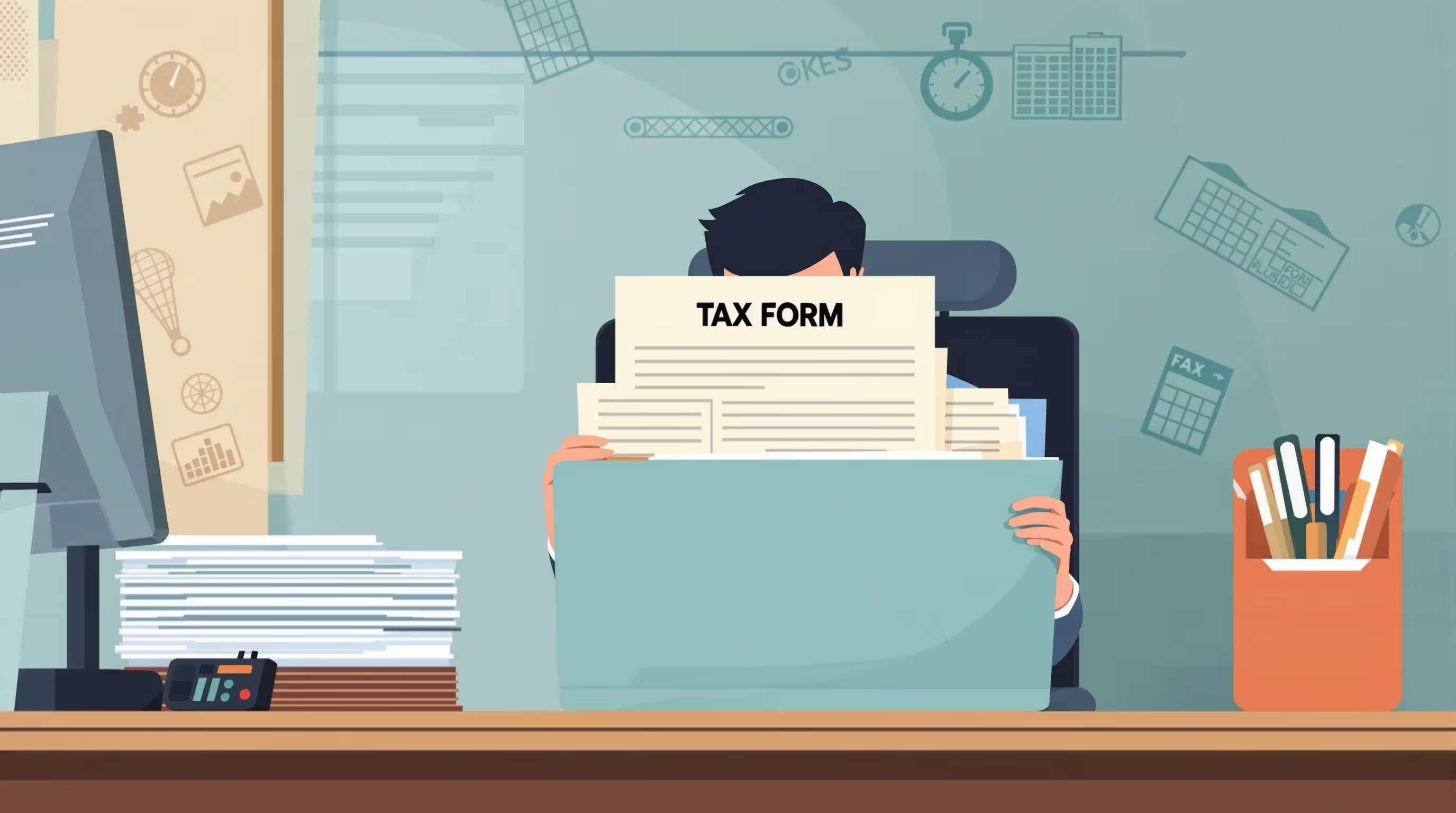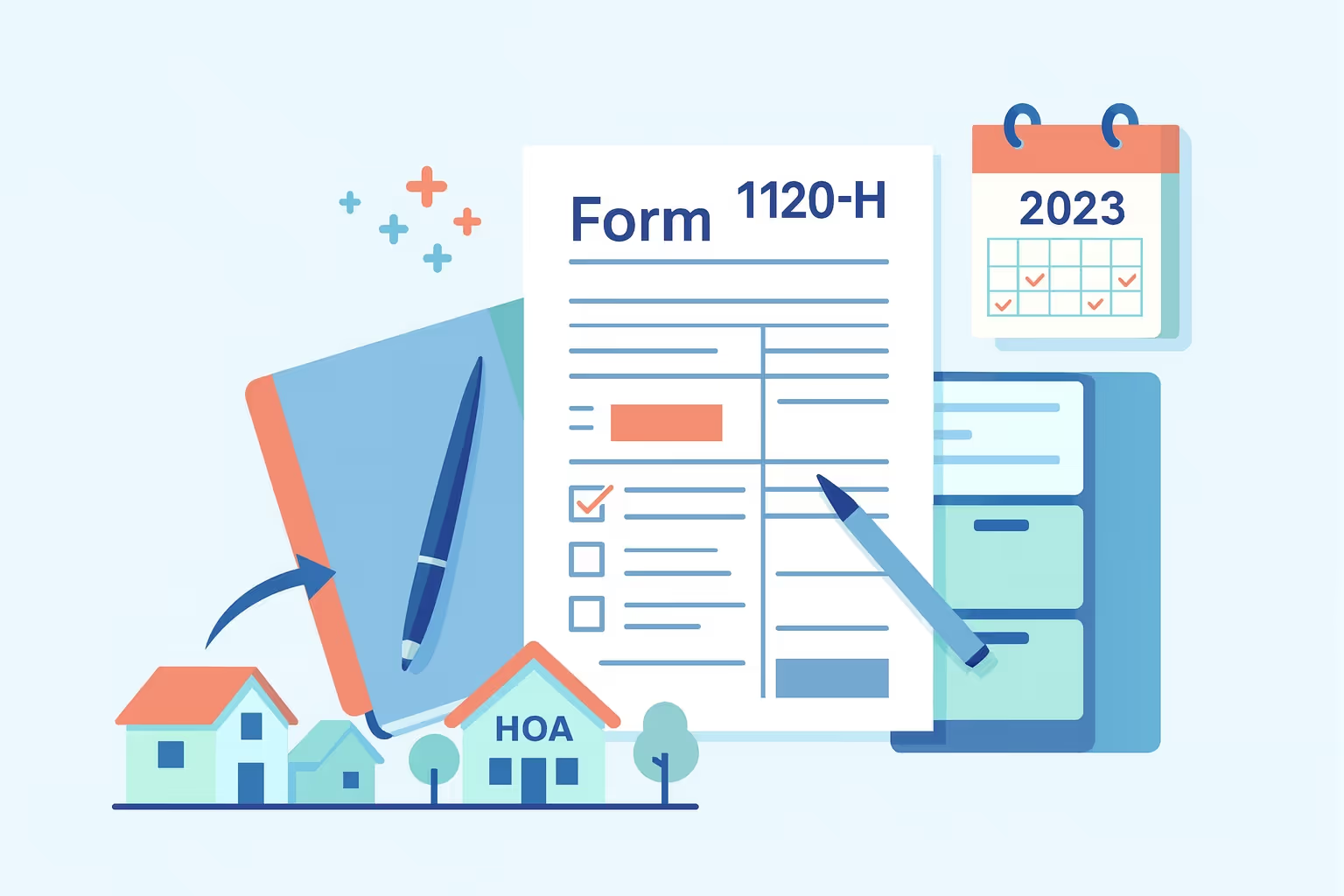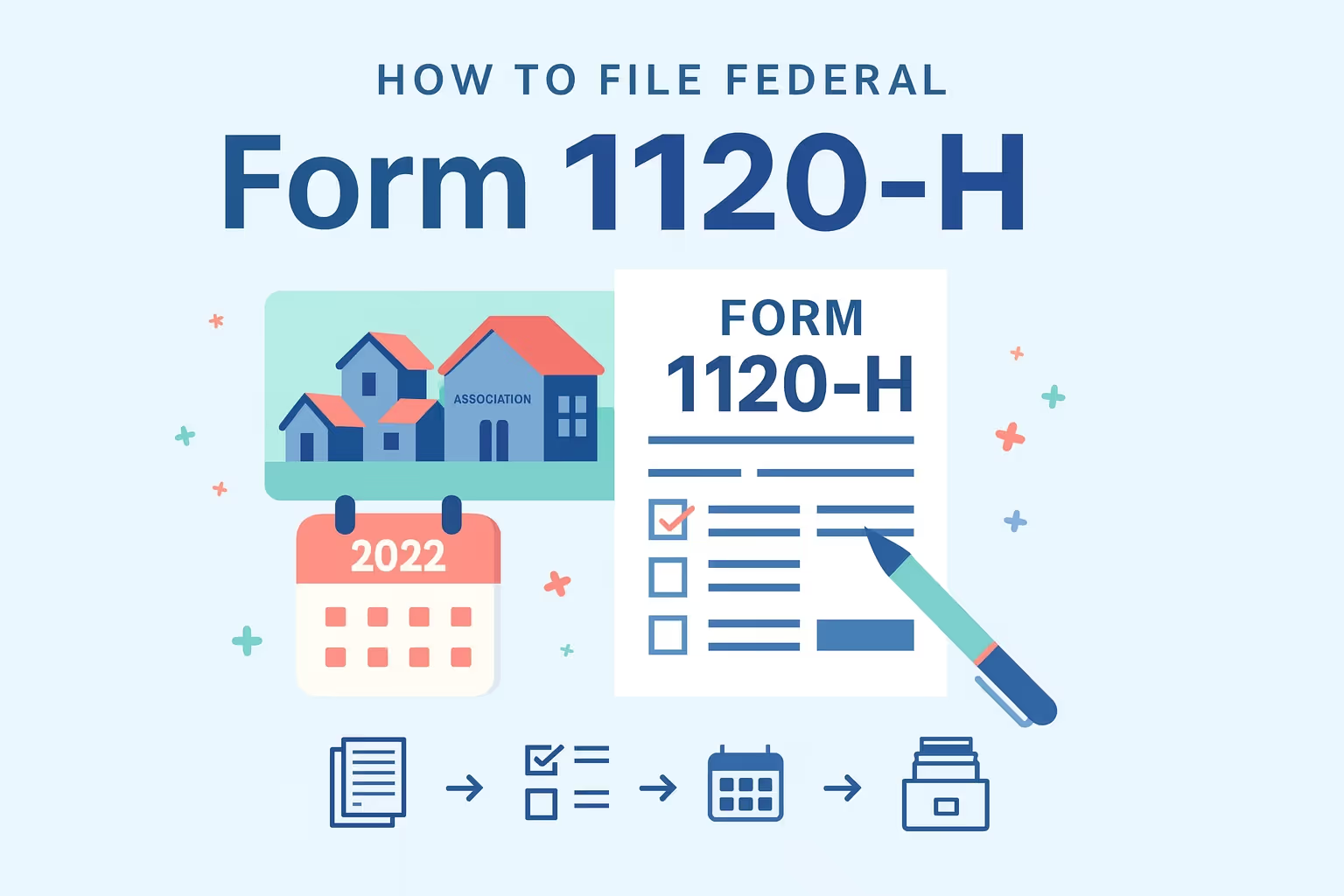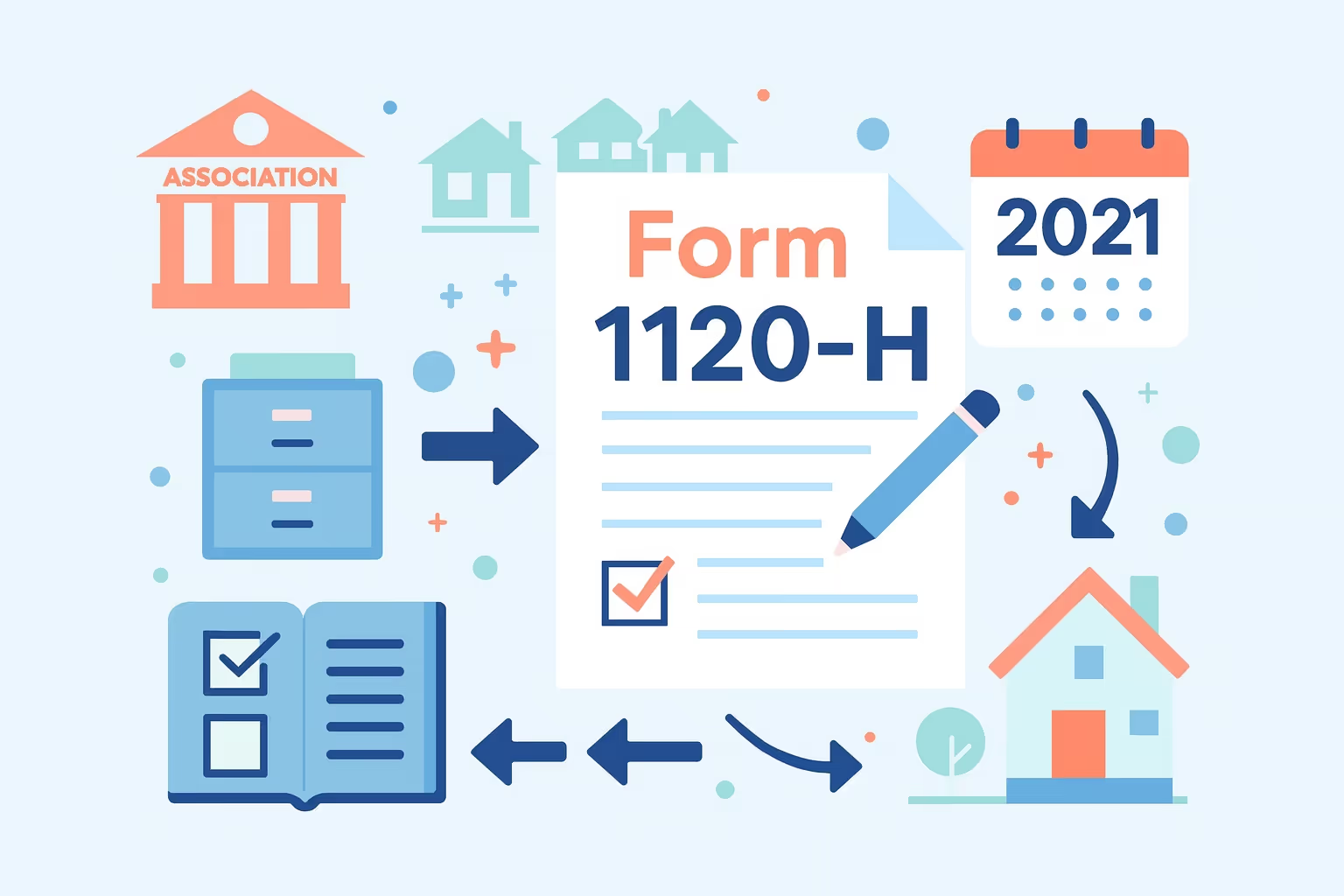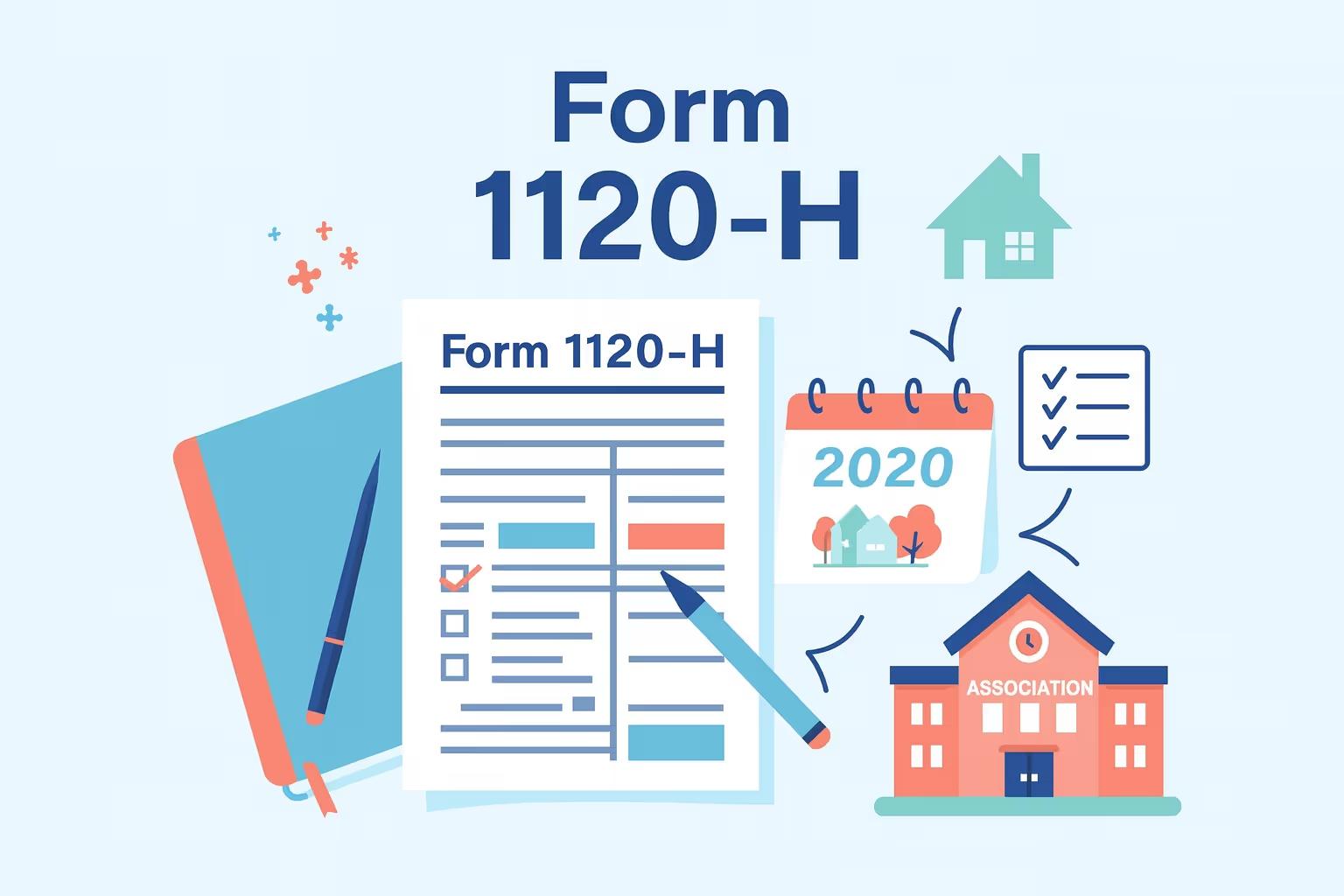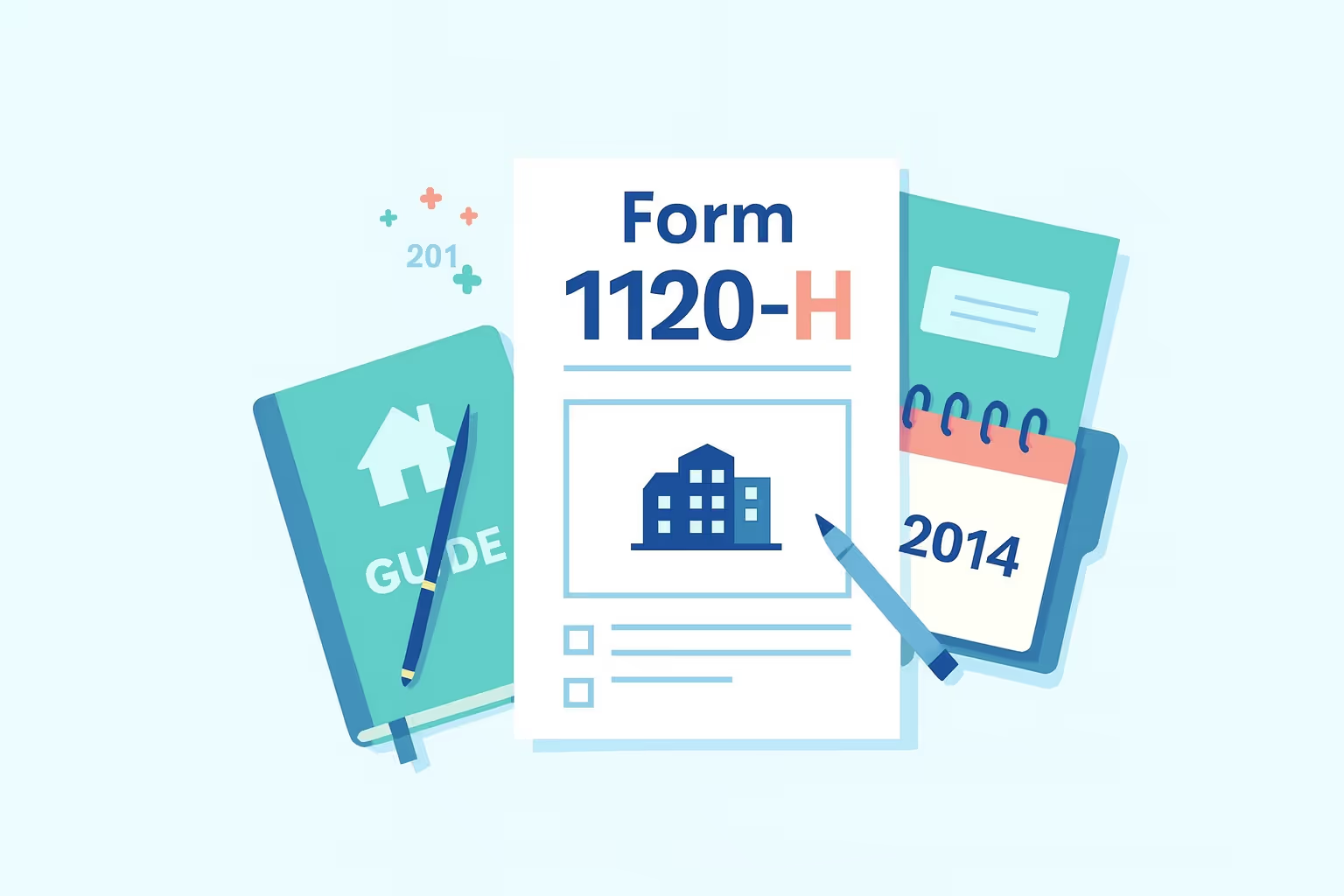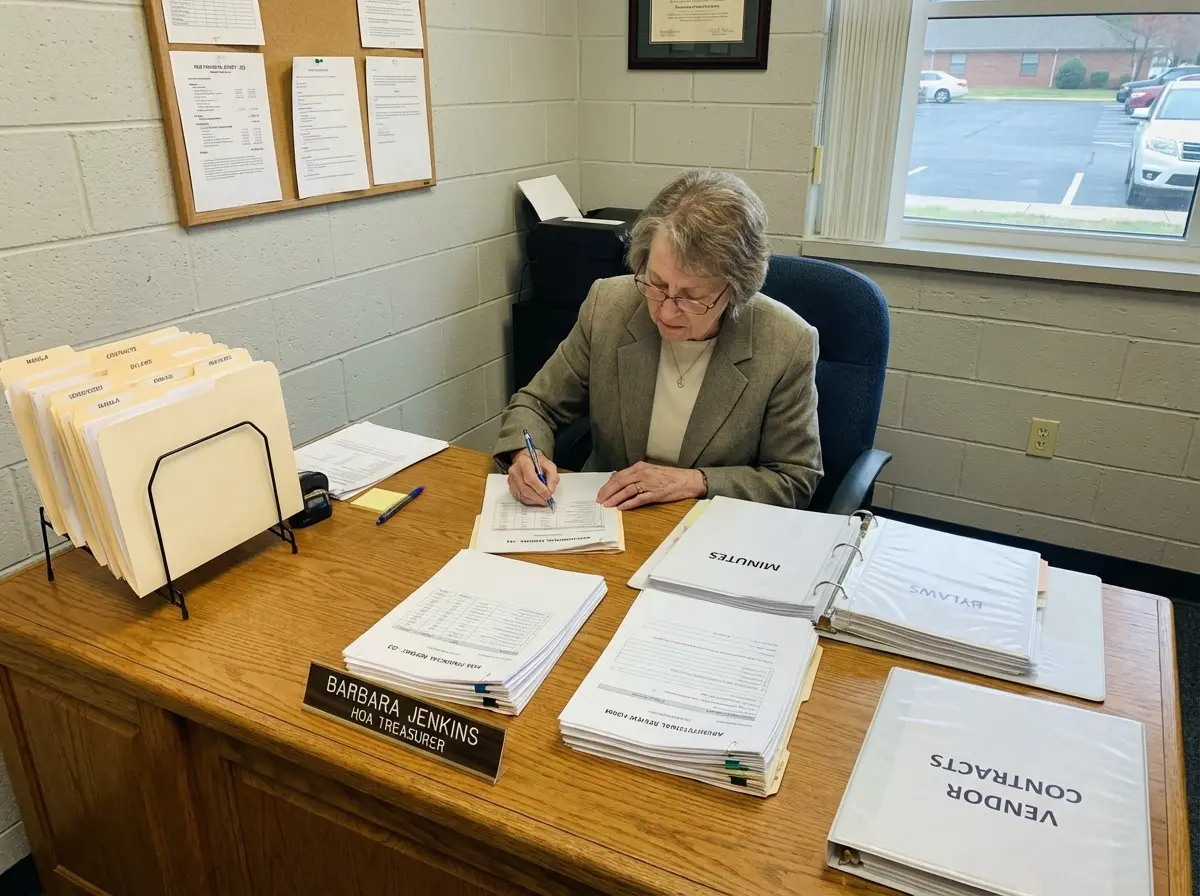
Filing an income tax return is a key responsibility for every homeowners' association. Form 1120-H allows qualifying associations to file under Internal Revenue Code Section 528, which provides specific tax benefits, including the ability to exclude exempt function income. This income generally consists of membership dues, assessments, and fees used to maintain association property and shared residential units. Understanding these rules enables condominium management associations, residential real estate associations, and timeshare organizations to fulfill their tax obligations accurately and efficiently.
Associations oversee common areas, collect membership fees, and pay property taxes assessed on community-owned assets. When completing a corporation income tax return for tax year 2012, they must accurately report both exempt and non-exempt income. This includes interest income, rental income, and capital gains earned from non-member sources. Using Form 1120-H confirms the association’s election as a tax-exempt organization recognized by the Internal Revenue Service, which may result in a reduced overall tax liability when all requirements are met.
This article provides a clear, step-by-step guide for association managers and board members who need to file federal tax returns accurately. It explains eligibility requirements, estimated tax payments, qualifying expenditures, and documentation standards. For official guidance, refer to the IRS Form 1120-H (2012) and the official filing guide on the IRS website.
Understanding Tax-Exempt Status Under Section 528
Homeowners' associations that qualify under Internal Revenue Code Section 528 can benefit from special tax treatment when filing their annual income tax return. This section enables associations to select a tax status that prioritizes community operations and property maintenance over profit-making activities.
Associations make the election each year by filing Form 1120-H, which is designed specifically for organizations that manage shared residential units, collect membership dues, and provide association services. To maintain compliance, an association must operate exclusively for the management, maintenance, and care of association property used by its members.
Qualifying as a Tax-Exempt Organization
An association qualifies for this election when at least 60% of its gross income consists of exempt function income, which includes membership fees, assessments, and other charges paid by association members. These funds are generally used for maintaining roads, landscaping, recreational facilities, and other common areas within the community.
The organization must also ensure that at least 90% of its expenditures are qualifying expenditures, such as property repairs, capital improvements, or property taxes assessed on shared land or facilities. When these requirements are met, the association may exclude exempt function income from taxation, which significantly reduces its overall income tax liability.
Exempt Function Income and Non-Exempt Income
Exempt function income is limited to amounts received from association members to maintain property that directly benefits all members. Funds collected for general administrative costs, maintenance contracts, and property management fees are classified under this category.
Non-exempt income includes revenue earned from non-member sources, such as rental income from facilities leased to the public, capital gains from the sale of association assets, or interest income on investment accounts. Each type of income is taxed at the flat rate specified under Section 528, which is 30% for most associations and 32% for timeshare associations. Accurate classification of each income type is essential to prevent underreporting or compliance issues.
Maintaining Compliance with Federal Tax Laws
Associations that elect tax exemption under Section 528 must ensure that no part of their net earnings benefits any private shareholder or individual. This requirement aligns with federal tax laws governing nonprofit organizations and helps preserve the association’s qualifying status. Maintaining detailed records of income, expenditures, and member transactions promotes transparency and simplifies annual filings.
By following these rules, associations can maintain compliance, preserve eligibility for certain tax benefits, and focus their resources on improving shared facilities and member services. Establishing proper accounting practices and documentation ensures that each association continues to meet the standards of a tax-exempt organization and remains in good standing with the Internal Revenue Service.
Filing Requirements and Eligibility Tests
Every homeowners' association that earns income during the tax year is required to file a federal tax return. Associations that qualify under Internal Revenue Code Section 528 may elect to file Form 1120-H, while those that do not qualify must complete a standard corporation income tax return. Filing under Section 528 enables associations to access certain tax benefits, including the exclusion of exempt function income and a flat tax rate on taxable income. To determine eligibility, associations must review both the 60% Gross Income Test and the 90% Expenditure Test. These requirements ensure that organizations operate for the benefit of their members and maintain the association's property.
- Organizational Purpose: The association must be organized to manage, maintain, and care for association property. This property typically includes common areas, shared facilities, and residential units that are collectively owned or maintained for the benefit of all members.
- Exempt Function Income Threshold: At least 60% of the association’s gross income must consist of exempt function income. This income typically comes from membership dues, fees, or assessments used to fund repairs, improvements, and shared services.
- Expenditure Allocation: At least 90% of the total association’s expenses must be qualifying expenditures. These include maintenance costs, capital expenditures for long-term improvements, and property taxes assessed on shared assets.
- Member Benefit Limitation: No portion of the association’s net earnings may inure to the benefit of any private individual or shareholder. This condition prevents the organization from using its income for personal gain.
- Organizational Structure: The association must be structured as a condominium management association, residential real estate association, or timeshare association. Each type must operate primarily for property management rather than profit from non-member activities.
The 60% Gross Income Test evaluates whether most of the association’s income supports its exempt purpose. Income from membership fees, assessments, and contributions used to maintain roads, landscaping, and utilities qualifies under this standard. Revenue from interest income, rental income, or capital gains does not qualify and must be reported as non-exempt income. If non-exempt income becomes too large, the association risks failing the test and losing its eligibility for Form 1120-H.
The 90% Expenditure Test confirms that most association expenses directly support the maintenance of community assets. Qualifying expenditures include cleaning, maintenance, insurance, repairs, and real estate taxes. Non-qualifying expenses, on the other hand, involve activities that generate non-exempt income, such as investment management.
Maintaining accurate records is crucial for verifying proper expense classification and demonstrating compliance with federal tax laws. Associations that meet both tests retain their eligibility for tax exemption under Section 528 and can continue to focus on community welfare and property management.
Step-by-Step Guide to Completing Form 1120-H
Completing Form 1120-H requires precision and a clear understanding of how to categorize income, expenses, and deductions under Internal Revenue Code Section 528. Each step ensures that the homeowners' association reports its financial activities accurately and remains eligible for certain tax benefits.
Associations must enter information in all applicable fields, follow the prescribed format, and avoid writing “See Attached” instead of providing figures directly on the form. The following step-by-step process outlines how to complete each section properly and maintain compliance with federal tax laws.
Step 1: Enter Basic Association Information
Begin the form by entering the legal name of the homeowners' association, its Employer Identification Number (EIN), and the complete mailing address. Indicate the type of association, such as a condominium management association, residential real estate association, or timeshare association. Specify the date of formation and the tax year-end date to ensure accurate recordkeeping. Confirm that the association’s activities focus on managing and maintaining association property for the benefit of members.
Step 2: Report Exempt and Non-Exempt Income
In the income section, report all revenue sources accurately. Include exempt function income derived from membership fees, assessments, and dues collected to maintain shared residential units, landscaping, and community utilities. Record non-exempt function income separately, including rental income, capital gains, and interest income from savings or investment accounts. Classifying income correctly ensures that the association pays tax only on taxable income rather than on exempt member contributions.
Step 3: List Deductible Expenses and Qualifying Expenditures
Complete the deductions section by listing all allowable expenses that support the association’s exempt purpose. Deductible items may include property maintenance costs, real estate taxes, insurance premiums, accounting fees, and repairs necessary to preserve common areas. Include qualifying expenditures such as capital improvements and property taxes assessed on community-owned land or facilities. Accurate expense categorization helps demonstrate compliance with the 90% Expenditure Test and ensures transparent financial reporting.
Step 4: Apply the Specific $100 Deduction
Every association filing Form 1120-H may claim a specific deduction of $100. Subtract this amount from taxable income after listing all allowable expenses. This deduction reduces the taxable base, which lowers the total income tax owed on non-exempt income. Apply the deduction in the designated line before calculating the total tax due.
Step 5: Compute Taxable Income and Apply the Flat Tax Rate
After subtracting deductions, calculate the association’s taxable income. Apply the appropriate flat tax rate: 30% for most homeowners’ associations and 32% for timeshare associations. The result represents the tax liability on non-exempt income. Enter any applicable tax credits and subtract them from the total amount owed to determine the final balance due.
Step 6: Verify All Entries and Attach Supporting Schedules
Before signing, review every line for accuracy and consistency. Ensure that all figures correspond to supporting documentation, such as financial statements and detailed schedules. Attach relevant tax forms, including Schedule D for capital gains, Form 4797 for property sales, and Form 4562 for depreciation. Include the association’s name and EIN on each attachment for proper identification.
Step 7: Authorize, Sign, and Date the Return
An authorized officer, such as the association manager or treasurer, must sign and date the completed return. Include the officer’s title and contact information in case the Internal Revenue Service requests clarification. The signing officer certifies that the information is complete and accurate to the best of the association’s knowledge. Once signed, make a copy for the association’s records before submitting the original form.
Accurate preparation of Form 1120-H helps homeowners' associations demonstrate compliance with federal tax laws and preserve eligibility for the tax exemption under Section 528. Following each step ensures that all income, expenses, and deductions are correctly reported and supported with documentation. Careful attention to detail throughout the filing process helps minimize delays, reduce errors, and reinforce the association’s credibility with the Internal Revenue Service.
How to File Federal Form 1120-H
Homeowners' associations that qualify under Internal Revenue Code Section 528 must follow specific filing procedures when submitting Form 1120-H. Proper filing ensures eligibility for tax benefits, supports compliance with federal tax laws, and prevents delays or processing issues.
Associations may file returns either on paper or electronically, depending on available resources and preferences. Before submission, every entry must be reviewed carefully to confirm accuracy in all reported figures, deductions, and attachments.
Paper Filing
- Mailing Addresses: Returns from the Eastern and Central states are sent to the Internal Revenue Service Center in Cincinnati, Ohio, while those from the Western states are mailed to the Ogden, Utah, location.
- Assembly Order: Attach schedules, forms, and supporting statements in proper sequence, ensuring the association’s name and Employer Identification Number appear on every page.
- Authorized Signature: An authorized officer must sign and date the return before it is submitted for mailing.
- Record Retention: Keep a copy of the complete return and all supporting documentation for association records.
Electronic Filing
- Software Verification: Confirm that the program supports Form 1120-H for the 2012 tax year before filing.
- Accurate Reporting: Ensure all income, qualifying expenditures, and deductions are entered precisely.
- Digital Confirmation: Retain electronic confirmation and a digital copy of the return as proof of submission.
- Security Assurance: Utilize secure platforms that meet the Internal Revenue Service's e-filing requirements.
Filing Deadlines
- Standard Deadline: March 15, 2013, for calendar-year filers.
- Extension: File Form 7004 for a six-month extension, which moves the due date to September 15, 2013.
- Weekend or Holiday Rule: If the due date falls on a weekend or a federal holiday, the deadline moves to the next business day.
- Payment Requirement: Tax liability must be paid separately through the Electronic Federal Tax Payment System (EFTPS).
Filing Form 1120-H accurately and on time reinforces the association’s credibility and supports its compliance with federal tax laws. Each organization should maintain thorough documentation to verify reported income, expenditures, and deductions. By submitting the return through the appropriate channel and meeting payment deadlines, associations preserve eligibility for favorable tax treatment under Section 528. Adhering to federal filing requirements enhances financial transparency and accountability.
Paying Federal Taxes Electronically
Homeowners' associations that file Form 1120-H must also pay their total tax liability electronically. The Internal Revenue Service requires eligible organizations to submit payments using secure federal systems to ensure accuracy, traceability, and compliance with federal tax laws.
Electronic payments simplify the process, reduce mailing errors, and provide immediate confirmation once a transaction is completed. Associations should review their banking details and ensure their accounts are active before initiating any transfer.
- Electronic Federal Tax Payment System (EFTPS): The Electronic Federal Tax Payment System (EFTPS) is the primary platform for making online federal tax payments. Associations must enroll in the system, which involves verifying their Employer Identification Number, bank account details, and mailing address. Once registration is complete, the system provides a secure login and allows users to schedule payments in advance. EFTPS is available year-round and supports both same-day and scheduled transactions.
- Enrollment Process: Enrollment requires the association’s legal name, EIN, contact information, and banking details. After completing the online form, the IRS mails a Personal Identification Number (PIN) to the address on record. The PIN activates the account, allowing users to log in and authorize transfers. Associations should enroll at least 10 business days before a tax deadline to ensure adequate processing time.
- Scheduling Payments: EFTPS allows associations to schedule payments up to one year in advance. Users can specify exact payment dates to align with filing deadlines, such as the March 15 due date for calendar-year filers. Submit scheduled payments at least one business day before the selected date to ensure timely processing.
- Recordkeeping and Confirmation: Every transaction generates a confirmation number, which serves as proof of payment. Associations should record each payment confirmation and retain copies for a minimum of four years, in accordance with federal recordkeeping requirements. These records support verification during audits or financial reviews.
- Alternative Payment Methods: Same-day wire transfers through a financial institution may be available for associations unable to access EFTPS. This method requires coordination with the bank and additional setup time. Payment service providers may also assist associations that manage multiple tax accounts.
Electronic payment systems improve efficiency and ensure payments reach the Internal Revenue Service securely and on time. Using EFTPS provides reliable confirmation, consistent recordkeeping, and flexibility in scheduling transactions.
Adhering to these procedures helps associations meet their financial obligations responsibly and maintain compliance with federal tax requirements. Electronic payment systems foster transparency and enhance confidence in the association’s financial management practices.
Required Schedules and Supporting Documents
Homeowners' associations filing Form 1120-H must attach the correct schedules and documentation to verify their reported income, expenditures, and deductions. These attachments demonstrate compliance with Section 528 of the Internal Revenue Code and promote transparency. Each document verifies specific line items on the income tax return and confirms that the organization meets the eligibility tests.
Commonly Required Schedules
- Schedule D (Form 1120) reports capital gains or losses from the sale of association property or investment assets.
- Use Form 4797 when reporting gains or losses from the sale of business-use property, such as maintenance equipment or vehicles used in a business.
- Form 4562 must be attached if the association claims depreciation or amortization on qualifying assets.
- File Form 4136 when claiming credits for federal tax paid on fuels used in qualified operations.
- Include Form 2439 if the association receives undistributed capital gains from a regulated investment company.
Supporting Statements
- The Other Income Statement provides a detailed breakdown of each income source included under “Other Income,” specifying the type and amount of each.
- The Other Deductions Statement lists each deduction type separately, along with the corresponding dollar amount, to support the total claimed on the return.
- The Exempt Function Income Statement outlines member dues, assessments, and fees used to maintain association property, confirming compliance with the 60% Gross Income Test.
- The Expenditure Allocation Report documents how expenditures meet the 90% Expenditure Test, identifying both qualifying and non-qualifying expenses.
- The Balance Sheet and Reconciliation includes a year-end balance sheet and reconciliation of net income to ensure accuracy between accounting records and the filed return.
Documentation and Recordkeeping
- Identification labels must include the association’s legal name and Employer Identification Number on every attached form or statement.
- All attachments should be assembled alphabetically or numerically, following IRS formatting standards.
- Associations must maintain copies of all attachments and supporting records for at least four years after filing.
- Every total on the attached schedules must match the figures reported on the main form.
Attaching comprehensive schedules and supporting documents enhances the accuracy of the association’s corporate income tax return. Proper organization, verification, and labeling help ensure compliance with federal tax laws and facilitate faster processing of tax returns. Consistent documentation practices also support future audits and preserve eligibility for certain tax benefits.
Common Mistakes and Compliance Tips
Homeowners' associations often encounter filing errors that affect compliance with federal tax laws. Many mistakes stem from incomplete forms, inaccurate income classification, or missing documentation.
Understanding the most frequent issues helps association managers avoid delays, additional tax liability, or loss of eligibility for certain tax benefits. The following list identifies common errors and practical steps to strengthen compliance with Internal Revenue Code Section 528.
- Filing Late: Missing the filing deadline can result in additional interest and late fees. Associations must submit Form 1120-H by the 15th day of the third month after the end of their tax year. Filing Form 7004 extends the deadline for six months but does not delay payment obligations. Marking key tax season deadlines on an annual calendar and scheduling reminders helps ensure timely submissions.
- Incorrect Classification of Income: Misidentifying non-exempt income as exempt function income can distort calculations and result in an underpayment of tax. Income from sources such as rental income, capital gains, and interest income must be reported as taxable. Only membership dues and assessments used for maintaining association property qualify as exempt income from the association's function. Accurate recordkeeping and category separation help avoid costly errors.
- Failing the Eligibility Tests: Associations that do not meet either the 60% Gross Income Test or the 90% Expenditure Test are ineligible to file Form 1120-H. Failing these benchmarks requires filing a corporation income tax return instead. Performing preliminary calculations before preparing the return verifies compliance with the qualifying thresholds.
- Omitting Signatures or Key Information: Unsigned forms or missing Employer Identification Numbers cause delays and rejections. An authorized officer must sign and date every return, and all identification details must match the association’s official IRS record. Double-checking entries before submission helps ensure completeness.
- Poor Documentation Practices: Incomplete or disorganized documentation undermines compliance and increases audit risks. Associations should maintain copies of financial statements, receipts, and supporting schedules for at least four years. Organizing files annually simplifies tax preparation and substantiates reported figures during reviews.
- Neglecting Payment Requirements: Some associations submit returns without paying tax owed. Associations must make payments electronically through approved systems to satisfy federal requirements. Scheduling payments in advance prevents missed deadlines and potential accrual of interest.
Proactive preparation and adherence to established filing standards help homeowners' associations maintain compliance and financial accuracy. Consistent review of income sources, expenditures, and supporting documents minimizes the likelihood of errors. Applying these compliance tips ensures accurate reporting and preserves eligibility for favorable tax treatment under Section 528.
Frequently Asked Questions
What income qualifies as exempt function income for an HOA income tax return?
Exempt function income consists of membership dues, fees, and assessments used to manage and maintain association property. These funds are allocated toward direct expenses such as landscaping, repairs, and maintenance of common areas. Revenue from non-member sources, including rentals or interest, does not qualify. Homeowners' associations must ensure that exempt function income supports their exempt purpose to remain eligible for favorable treatment on HOA tax returns.
Can a homeowners' association carry over excess membership dues for next year?
Yes, if excess membership dues remain after covering current-year direct expenses, the homeowners' association may carry them forward to future periods. Apply the carryover to costs that maintain association property, not personal use. Accurate accounting ensures that excess funds are allocated to the exempt purpose. Reporting these amounts correctly supports compliance with Internal Revenue Code Section 528 and helps reduce association taxes.
Does an HOA need to file a state income tax return in addition to a federal one?
Many states require HOAs to file a separate state income tax return even if they qualify for a federal exemption under Section 528. State rules may vary, and some states impose annual fees or reporting requirements. Reviewing local regulations ensures full compliance across jurisdictions. HOA board members should confirm whether additional filings apply to their location or consult a tax professional for specific state guidance.
What non-exempt expenses must be included on a corporation's income tax return?
Non-exempt expenses include costs incurred to generate taxable income, rather than maintain property for members. These may involve investment management fees, advertising, or activities unrelated to exempt purposes. Such expenses cannot count toward the 90% Expenditure Test. Reporting them accurately on the corporation income tax return ensures transparency and compliance, allowing homeowners' associations to demonstrate proper separation between qualifying and non-qualifying expenditures.
When should HOA board members seek help from a tax professional?
HOA board members should consult a qualified tax professional when unsure how to file tax returns, allocate direct expenses, or classify income. Expert guidance is beneficial for complex filings involving capital improvements, non-exempt expenses, or estimated tax payments. Engaging professional assistance helps associations maintain compliance, accurately apply exemptions, and avoid costly errors when preparing or reviewing IRS Form 1120-H or other applicable filings.






